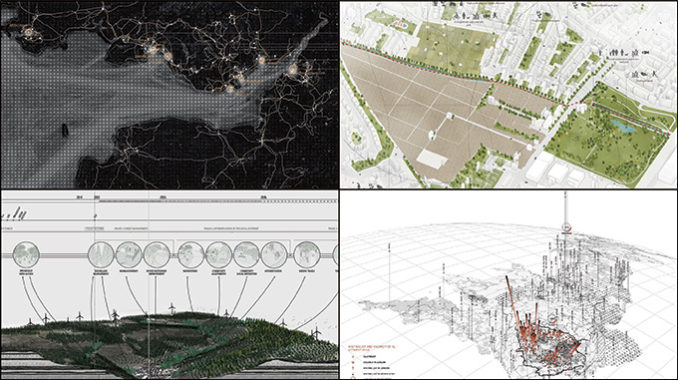
A four-part interview series that delves into the project work of graduating Landscape Urbanism students from London’s Architecture Association School. Each interview aims to understand how these students utilise technology, data analysis, site context, community and existing landscape or urban assets to craft their vision for projects of the future – projects that build on a deeply rooted passion to empower communities and build resilience into the planet.
The Landscape Urbanism programme at AA explores the role that designers can play when confronted with policies and regulations that are currently shaping landscapes and territories across the globe, be they metropolises, cities, rural environments, infrastructural and productive landscapes. Such environments are today configured by economic policies, political decision-making, social and cultural structures, and at times strict engineering solutions. Design inputs are either left out entirely or placed at the fringes. These graduating students have been pushed to explore design not only as the source of aesthetic and performative proposals offering necessary alternatives to today’s acute urban and environmental problems but also as a mechanism to orchestrate, choreograph and negotiate their implementation at large scales and over time. The design profession is constantly evolving and there is the need to integrate critical thinking with diverse practices such as cartographic representation, scripted simulation, data analysis and GIS mapping, all of which are widely utilised in geographical disciplines, but relatively untapped within the design fields of the wider built environment professions. But this is changing and this interview series looks at what this new construct might look like.
Together with New Economic Foundation, AA has recently signed an agreement of collaboration that aims to understand how design and policy-making can intersect and provide alternatives to contemporary spatial problems. Through this agreement, New Economic Foundation provides the AA Landscape Urbanism students with a series of lectures, tutorials and seminars to help them understand economics and policy-making, from which the students explore visually the impact economic policies can have in urban landscapes and territories. The students starting points this year included:
- Transitioning from fossil fuels to a ‘renewables’ economy,
- Expanding wild areas into our urban environments,
- Introducing new woodland typologies into our regional areas, and
- A community approach to the city farming and shared open space.
What is clear from the graduating students work, outside the highly relevant topics of choice, is the clarity of their process and the dynamic and articulate use of data to inform, underpin and present their conceptual thinking. Whether it is the mapping of social needs, the tracking of pedestrian movement or the modelling of ecological patterns, the work undertaken by these graduates shows significant promise for the profession.
If this is the quality and shape of the generation that is to embark upon careers within the built environment and who are about to take up positions within our design firms as the new population, then it is clear that landscape architecture and urban design will most certainly continue to grow and succeed. We just need to give them the space to have a voice and play on the ‘big field’ as soon as possible, as much of what they are doing now as students is on par with the wider professions daily efforts. It is incumbent therefore that this future generation of talent not go back to the starting blocks of their first days of study. They are at the top of their game and the time is ripe for them to be given room to rocket forward and help be part of the problem solving we have before us.
With their youth, energy, passion and clarity – they are a significant force to be leveraged.
Each part is a discussion between the AA Landscape Urbanism Graduating Student working group and Angus Bruce, HASSELL Head of Landscape Architecture.
